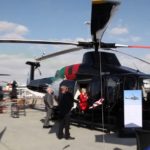UAM startup ASX’s business model positions the manufacturer in the USA’s Motor City, Detroit, enabling it to benefit from the sector’s expertise in high volume production
The emerging urban air mobility offers passengers the opportunity of fast access across cities and manufacturers the potential for a scalable market.
It’s the reason why startup aviation company ASX, whose mission is to make private air mobility accessible to everyone, is developing its new eVTOL in the USA’s automotive heartland – Detroit. ASX has completed built and flight tests of five subscale concept vehicles and is now on the way to beginning full-scale production design and commercial certification process for its MOBi-One vehicle. MOBi-One is expected to be able to carry up to five people and can be used for MediEvac, reconnaissance and cargo purposes as well as for passenger transport.
“Synergies” between automotive and UAM
Dr Anita Sengupta, chief product officer and vice president business development ASX, said Detroit had been chosen as the base for the startup as there were “synergies” between automotive and the emerging UAM sector with both sectors looking towards a “big shift towards mobility as a service.”
With production close to prototype stage, she added there was a lot to be learned from the automotive sector, particularly in terms of upscaling.
“Our business model is actually coupled to being in Detroit, specifically to use the electric vehicle supply chain that exists from a battery and electric motor perspective and to pull from the expertise for mass production, volume manufacturing which ultimately can lead to much lower cost vehicles which have the same safety and reliability which is required.”
“If you take a look at how inexpensive it is to manufacture an automobile and how reliable they are, there’s a lot to be learned.”
MOBi-One can use runway or helipad
The aircraft can take off and fly as a VTOL or land on a runway using its tilted wings. In terms of infrastructure, MOBi-One will initially be able to use existing general aviation airport or helipad infrastructure before city centre vertiports are created.
When asked about scale, Dr Sengupta pointed out that “nothing happens overnight”, so production for both ASX, as with the rest of the sector, will build gradually as the infrastructure comes online.
“Our business model is focused on having 50 aircraft in 50 urban centres in the United States by 2025, so that’s 2,500 aircraft. Nothing will happen overnight where you have thousands of aircraft flying per hour that you didn’t have before
“Eventually, over time, the infrastructure will be increased and enhanced and air traffic control will be increased and enhanced to support a larger volume of traffic.”
Dr Sengupta said that being short range, UAM vehicles could help reduce emissions. “The use case for UAM is inherently short range, so you can have a fully electric aircraft – you don’t need fuel,” she said.

